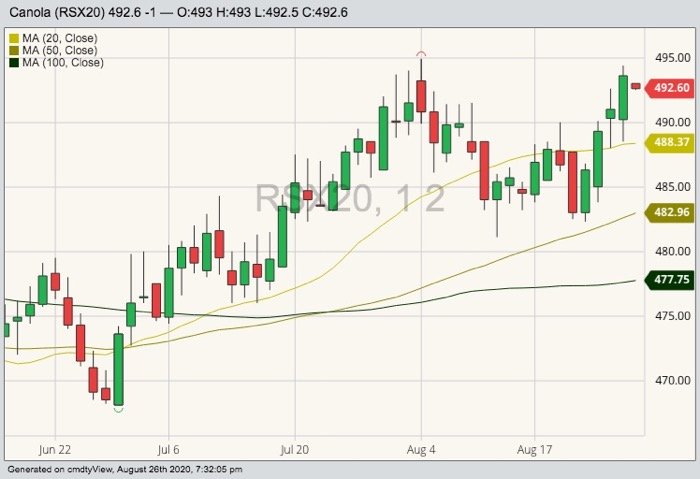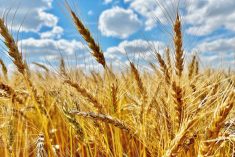MarketsFarm — Canola on ICE Futures has continued to push higher over the last week largely due to the growing strength in soyoil on the Chicago Board of Trade.
“We got soyoil at a seven-month high and that’s certainly a supportive factor in continuing to underpin our market,” said Keith Ferley, a trader with RBC Dominion Securities in Winnipeg, Man.
In turn soyoil has been increasing in value along with soybeans, as China has continued to ramp up its purchases of beans from the U.S. Reports stated China is looking to acquire 40 million tonnes from the U.S. by the end of 2020. If that’s achieved, it would exceed the record bean exports to China set in 2016 by 10 per cent.
Read Also

Trump mulls ending some trade ties with China, including in relation to cooking oil
U.S. President Donald Trump said on Tuesday Washington was considering terminating some trade ties with China, including in relation to cooking oil.
As for markets, the funds and the specs have been long, according to Ferley.
“Buyers have to keep taking the market higher to get the contracts they want. The question here is, what levels are we going to get to before we start taking things south?” he said.
Ferley said the bulk of this year’s canola harvest is still off in the distance. Manitoba reported on Tuesday its canola harvest was only at two per cent and very far behind the three-year average. However, swathing was taking place throughout the province.
Saskatchewan Agriculture last week noted all of one per cent of the canola crop was combined in the province’s southeast region.
As with most of Manitoba, pretty much all of Saskatchewan has been experiencing prolonged dry conditions likely to affect canola yields. That certainly would give impetus for canola values to remain higher, at least until combines are creating large amounts of dust and trucks are lined up at the grains elevators.
“Alberta is a different situation, they got tons of moisture,” Ferley said.
As for export sales, he said the European Union has been buying a good amount of canola from Canada.
Another factor is the coming principal field crops report from Statistics Canada scheduled for Monday (Aug. 31).
Surveys for the upcoming report were taken in July, which was before the heat and dryness really set in, Ferley said. Nevertheless, he expects yields to be still pretty good — just not as much as people thought they had been earlier this year.
Adding to that was Tuesday’s monthly report from Agriculture and Agri-Food Canada, which maintained its canola yield estimate at 2.27 tonnes per hectare, for 18.875 million tonnes. From there, the markets will see how much the Statistics Canada estimates will change things.
— Glen Hallick reports for MarketsFarm from Winnipeg.

















